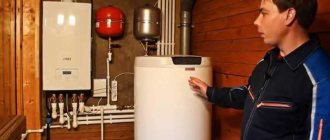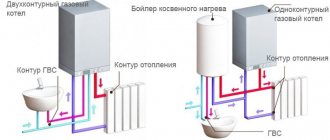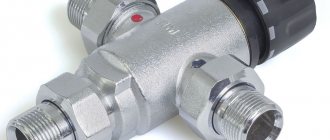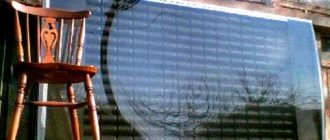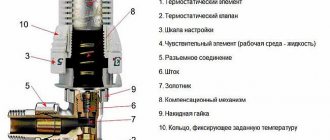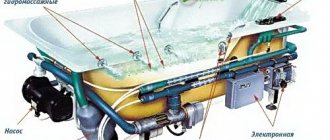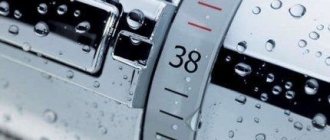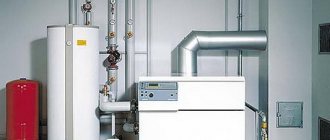The principles of alternative energy are increasingly gaining the attention of consumers. This is largely due to the increase in tariffs on traditional energy resources, as well as periodic disruptions in the services market.
In these circumstances, a hydrogen heating boiler is considered one of the most promising types of devices operating on renewable fuel, which is H2 gas.
Before deciding to purchase such a unit, you need to familiarize yourself with the principle of its operation and evaluate the advantages and disadvantages of using hydrogen as a fuel. These issues have been studied by us and described in detail in the article.
In addition, we identified parameters that should be taken into account when choosing a boiler, provided operating tips and prepared a review of the best factory-made hydrogen generators. Fans of homemade products will find the instructions for assembling the unit with their own hands useful.
Properties of hydrogen as a fuel
As mentioned above, the fuel for such units is hydrogen, the lightest gas in nature, colorless and odorless. Among its advantages is the large amount of heat that is released during the combustion of H2 (121 MJ/kg, while the combustion of propane releases only 40 MJ/kg).
Under normal conditions, hydrogen burns at a temperature of +2000°C, but with the help of a catalyst it can be reduced to +300°C. This allows boilers to be made from inexpensive steel rather than from expensive rare earth metals.
Hydrogen is non-toxic, which makes it safe to use in everyday life. When this substance is burned, water vapor is produced, which improves the indoor microclimate and does not require chimneys.
When using hydrogen, safety rules must be strictly observed: if the gas is used incorrectly or comes into contact with an open flame, a destructive explosion can occur
Disadvantages include the increased explosiveness of hydrogen, especially when it is mixed with air or oxygen, which leads to the formation of detonating gas.
Advantages and disadvantages of hydrogen boilers
The strengths of such devices are:
- Completely environmentally friendly . Water decomposition products do not harm the atmosphere; they are completely safe for the health of people and pets.
- High level of efficiency , which can reach 96%. This is significantly higher than the efficiency of diesel, natural gas or coal.
- Saving natural resources through the use of alternative energy sources.
- Low price of calories received. For such devices, water and a little electricity are enough.
At the same time, such devices also have weaknesses.
The disadvantages include the following nuances:
- Requiring maintenance . To maximize H2 production, the metal plates must be replaced every year. In addition to replacing the electrodes, a catalyst must be added regularly to produce the planned amount of energy. The frequency of this procedure depends on the power, as well as on the features of a particular model.
- High cost - factory installation will cost no less than 35-40 thousand rubles.
- Danger of explosion when the normalized pressure in the boiler increases.
- There is a shortage of hydrogen cylinders - they are quite rarely found on sale.
- Limited choice . Since such heating devices are not very common on the Russian market, it is not always possible to quickly find a suitable model, as well as find competent specialists for installation and repair of equipment.
- The need for communications . To operate the device, you need a constant connection to the power supply to carry out the electrolysis reaction, as well as to a source of water, the flow of which depends on the power of the device.
It is necessary to mention that manufacturers pay great attention to new technologies and strive to improve hydrogen boilers, eliminating or minimizing disadvantages.
Connection
How to connect an electric boiler to heating and water supply systems with your own hands?
Here are some possible schemes:
This is how double-circuit electric boilers are connected for heating and hot water supply. Two terminals are used for connecting heating dispensers, two - for connecting to make-up from cold water supply and hot water dispensing.
Thanks to the indirect heating boiler, you can use a single-circuit electric boiler for water supply
The installation of modern electric boilers for heating needs has a couple of subtleties:
- Wall-mounted heating element boilers are usually equipped with a safety group, a circulation pump and an expansion tank located in the device body. This configuration turns the boiler into a full-fledged boiler room: it is connected directly to the heating supply;
A complete set of piping is located inside the boiler body
- Compact boilers (induction and electrode) are supplied without additional equipment. Their harness should include:
| Image | Description |
| Expansion tank. It accommodates the excess volume of coolant during its thermal expansion, preventing pressure growth in a closed circuit. The volume of the tank is usually taken equal to 1/10 of the volume of coolant in the circuit. |
| A safety valve that releases excess coolant in the event of a dangerous increase in pressure. |
| Pressure gauge for pressure control. |
| Automatic air vent that removes air that obstructs circulation. |
| A circulation pump that ensures the movement of the coolant. |
Where the strapping elements are mounted:
- Safety group (air vent, safety valve and pressure gauge) - at the boiler outlet. The instruction is due to the fact that it is there that when circulation in the circuit stops, the pressure increases most quickly;
- Expansion tank - at any point in the circuit at a distance from the circulation pump;
- The pump is on the return line in front of the boiler, where the coolant temperature is minimal. The lower the temperature, the longer the rubber seals and plastic parts of the device will last.
The circulation pump is installed on the return line in front of the electrode boiler
Operating principle of the heating unit
Due to its activity, H2 does not occur in nature in its pure form, but it is quite easy to isolate it from ordinary water by electrolysis, which also releases gaseous oxygen.
In the presented image you can see a schematic design of heating equipment operating on hydrogen, indicating all structural elements (+)
For the heating device to function, it is first necessary to obtain H2. This happens in a special compartment reserved for such a reaction. Liquid is poured into the container, into which metal plates are immersed.
They are supplied with an electric current of specially selected purity, under the influence of which H2 and O2 are released, as well as water vapor as a by-product.
The resulting mixture is passed through a special device - a chemical separator, with the help of which it is possible to isolate hydrogen, separating it from other impurities. The purified gas is supplied to the burner, on which a valve is installed.
It prevents H2 from moving to the other side, which prevents an explosion. In this case, oxygen and water vapor are released into a special container through another system.
Next, hydrogen gas passes through the protection unit and enters the combustion chamber. Here it reacts with gas in the presence of a catalyst, resulting in the formation of heat, which enters the home heating system through a heat exchanger.
The water vapor released in the chamber is returned through a specially designated channel to the reservoir with the electrolyte, thus using the recycling process.
Power adjustment is carried out using specially equipped channels, the number of which can reach six. Each of these devices contains a catalyst inside, due to which, when turned on, the process of generating heat starts.
The gas flow, heated to a temperature of 40°C, begins to move towards the heat exchanger located in the combustion chamber.
Thanks to separate designs, the channels can operate independently of each other, which allows you to turn on only part of them.
The process of producing hydrogen in modern electrolysis devices is fully automated. The only manual process is pouring water into the system
Modern models are also equipped with various devices, for example, water level indicators and pressure sensors, which allows them to operate automatically and respond urgently in unforeseen situations.
Components of a hydrogen plant
The design of a heating system operating on hydrogen is quite simple.
The boiler , which plays the role of a heat exchanger, is the main element where hydrogen production occurs.
A boiler operating on hydrogen can be assembled from available elements, and for its operation only ordinary or distilled water is required (+)
The electrolyser is the main operating part of the boiler, where the electrolytic reaction occurs, leading to the decomposition of water into H2 and O2. The element is a reservoir filled with water into which metal electrodes are placed that have maximum current conductivity.
The plates are connected to wires through which electricity is supplied.
A burner is a device that helps heat the coolant in the heating system. Located in the combustion chamber, a spark is supplied to ignite it.
The burner valve is a special part located at the top of the device. Thanks to this part, the H2 that rises to the top easily overcomes the barrier inaccessible to other released substances and enters directly into the burner.
Factory hydrogen boilers are equipped with a control unit. The panel displays voltage and current indicators, a power regulator and levers for setting other operating parameters
Pipeline - communications that depart from the unit and are used to supply heat to all rooms of the house. For piping, heating pipes with a diameter of 25-32 mm are used. When laying, the fundamental rule is observed: the diameter of each subsequent branch should be smaller than that of the previous one.
Electric heating versus central heating
What is more profitable - an electric boiler or central heating?
First, some input data using the example of the city of Chelyabinsk:
- The cost of heating one square meter of living space in January-April 2021 was 44 (rounded) rubles per month;
- A kilowatt-hour of electricity at a single-rate tariff costs the consumer approximately 3 rubles;
- To heat one square meter of housing with an average ceiling height of 2.5 meters and high-quality external insulation, the house needs about 100 watts of heat.
The following is simple arithmetic:
- The hourly electricity consumption for heating one square of living space will be 0.1 kWh, daily - 24 x 0.1 = 2.4 kWh, monthly - 2.4 x 30 = 72 kWh;
- Electric heating costs per month will be 72 x 3 = 216 rubles per square meter, or almost five times more than central heating.
Conclusion: switching from central to electric heating is extremely unprofitable.
An electric boiler is an unprofitable replacement for central heating
Electric boiler versus centralized hot water supply
Now let's compare, in terms of costs, an electric boiler for hot water supply with a centralized hot water supply. Let's start again with statistical data for the same Chelyabinsk.
- A cubic meter of hot water costs 56 rubles;
- Cold water treatment together with sewerage costs 34 rubles;
- To heat a cubic meter of water by 50 degrees (from +10°C typical for cold water mains in winter to +60°C stipulated by SNiPs) 58 kilowatt-hours of heat are required.
As is easy to calculate, the cost of heating a cube of cold water will be 58 x 3 = 174 rubles. Together with the cost of the water itself, the costs will be 174 + 34 = 208 rubles.
Conclusion: it is definitely not worth giving up the services of a centralized hot water supply to switch to an electric boiler for water supply.
An electric water heater is useful only in the absence of a centralized hot water supply
Generator selection criteria
When deciding to purchase such equipment, it is important to pay attention to the following criteria.
Power . With modern devices, the value of this indicator can vary significantly, which allows you to choose the best option for both a small house and a two- or three-story building.
The average water consumption in modern generator models is not too high. Within 24 hours, the device will need approximately 5.5 liters to operate, which generates 1.2-2 liters of fuel
Number of circuits . On devices operating on hydrogen, a heating circuit is usually installed. Some models also provide additional installation of a second (heating) circuit.
Electricity consumption level . Today's technologies make it possible to achieve excellent heat performance while using a minimum of electricity. The energy consumption of different types of generators varies from 1.2 to 3 kW per 1 hour.
Low energy consumption is achieved due to the fact that the hydrogen boiler does not operate continuously, but only to maintain a certain temperature in the room.
Power supply . All types of hydrogen generators can be divided into two large categories: one runs on gas, the other runs on electricity.
Manufacturer . It is better to prefer proven manufacturers (Italy, USA). You should be wary of low-quality products offered by dubious companies at extremely low prices.
Design
Solid fuel boilers have a simple operating principle. The combustion chamber is placed in a steel casing; fuel is loaded through the door on the front side of the boiler and ignited.
During fuel combustion, hot flue gases wash a heat exchanger, made in the form of pipes or a water jacket, and transfer heat to the water of the heating circuit. When heated, the water begins to move naturally along the circuit due to the temperature difference at the inlet and outlet of the boiler.
Cooled boiler gases are carried away into the atmosphere through the chimney, also due to the temperature difference at the inlet and outlet of the boiler. Under the firebox there is an ash pan, which is designed to collect unburned parts of the fuel.
The ash chamber door acts as a damper to regulate the air supply to the combustion zone to ensure complete combustion.
Tips for using the boiler
To improve the functionality of the unit, it is important to follow the included instructions. You can improve the operation of the device by adding additional parts (you must strictly follow safety rules).
A flame sensor installed on the burner increases the safety of the system. When the fire goes out, the device automatically shuts off the flow of flammable gas into the burner, thereby preventing it from entering the room
You can install special sensors into the inside of the heat exchanger to monitor the increase in water heating rates, as well as supplement the burner design with shut-off valves.
It is enough to connect it directly to the temperature sensor so that the boiler automatically turns off as soon as the heating reaches the set value.
It is also useful to install a device for normalized boiler cooling.
Hydrogen devices can be used not only as the only heating equipment in the house, but also in combination with other heating systems. In this case, the main heating units can operate in low-temperature mode.
If operating standards are observed, a hydrogen-powered unit will serve for decades. Although the warranty period for such devices is 15 years, in practice they can work efficiently for 20-30 years.
Repairing such devices will not be difficult for an experienced technician, since the basic design of a hydrogen boiler is not too different from analogues operating on other types of fuel.
Circuit layout options
There are two such options:
- Flow-through.
- Cumulative.
Heating using the flow-through method requires that the water heating circuit coil be built into the jacket. This heat exchanger heats up thanks to the energy of the heating circuit. The coolant, moving along the coil, reaches a temperature of +45 ℃. The productivity of this equipment is 8 l/min.
With storage heating, the system is equipped with a boiler - a special tank for heating water. The boiler is built into the main heat exchanger or chimney. Water is heated by hot air. As hot water is consumed from the tap, cold water is supplied to the tank from the plumbing system. The maximum heating is +90 ℃.
To increase the productivity of the equipment, it is equipped with a circulation pump, which almost doubles the efficiency. However, this technology requires a source of electricity, which in turn affects financial costs.
If there are power outages in the house, the system should be supplemented with a switch that will switch the water pumping to natural circulation.
Top 5 Factory Hydrogen Generators
The first company to manufacture and patent the technology for manufacturing a hydrogen fuel boiler was the Italian company Giacomini . It specializes in devices based on environmentally friendly methods of generating energy: geothermal pumps, solar panels and others.
H2ydroGEM is a catalytic combustion chamber, each horn of which contains a substance that accelerates the combustion reaction of hydrogen. Due to this, the process occurs at a relatively low temperature
Currently, similar models are manufactured by American, Chinese, and European companies, but their range is not very wide compared to boilers operating on other types of fuel.
The best factory models of hydrogen systems
Among the most popular models we note:
- MegaTank100 is a generator that runs on electricity from the network. It has a reliable multi-level protection system against overheating and short circuiting, which guarantees safe and productive operation. The cost of the model depends on its configuration.
- STAR-2000 is an expensive unit (>200,000 rubles) with excellent technical characteristics. Despite the fact that this generator consumes minimal energy, it is capable of heating a room of 251-300 square meters.
- Kingkar is a mains-powered device with excellent performance properties. The cost of the model is quite high - about 100 thousand rubles, but it is offset by economical energy consumption.
- H2-2 – Italian “extra” class equipment at a high price (approximately 250,000 rubles). allowing to heat air in large spaces (from 300 m3 and above) with minimal electricity consumption.
- Free Energy - high-quality devices at an affordable price in the range of 15-35 thousand rubles (the price depends on the power and other characteristics). Equipped with a control unit that automates many processes, a multi-level voltage and pressure regulation sensor.
There are also other models in different price categories.
Which company should you choose?
Solid fuel boilers equipped with a water circuit are produced by various manufacturers, among which stand out:
- Teplodar is a Russian company with patented technologies that supplies high-quality heating equipment throughout the world.
- Zota is a Krasnoyarsk brand that supplies inexpensive components and boilers of low cost and high build quality.
- Stropuva is a young Lithuanian company that has patented a candle-type long-term combustion technology. It produces models taking into account the climatic characteristics of countries and regions.
How to make a boiler yourself
Heating generators have a fairly lightweight design. With a certain level of skill, you can assemble the device yourself. At the same time, due to the explosiveness of the hydrogen mixture, such work requires extreme responsibility, knowledge of safety precautions and experience in installing such devices.
If you manufacture the device yourself, you will not be able to get rid of significant financial costs, since it is better to purchase some of the components ready-made. High risk makes you think about factory installations, for which manufacturers provide long-term warranties
The process of making a hydrogen boiler with your own hands can be divided into several stages.
Step No. 1 - execution of the drawing and preparation of materials . First of all, you should find similar projects on the Internet in order to use them to think about a device that would meet all conditions and possibilities.
It is necessary to accurately calculate all the indicators, and above all, the required power, and also decide on the materials that will be used to make the boiler. Ferromagnetic alloys are considered the best option, but a container made of stainless steel is quite suitable.
Although heating hydrogen generators may have different designs, the following details remain unchanged:
- 12-volt power source;
- the tank where the structure will be located;
- PWM controller with a power of at least 30 A;
- several tubes of different diameters made of stainless steel;
- steel sheet;
- hacksaw for metal;
- gas burner - preferably a ready-made one purchased in a store.
Step 2 - Create Electrolytes . To make the plates with which the electrolyzer will be equipped, you need to take a sheet of steel of medium thickness. Using metal scissors, a hacksaw or another tool, it is cut into equal strips of 18 or more pieces (the number must be even).
On the other hand, in each of them it is necessary to drill holes for the bolts that will be needed to hold these elements completely motionless in the electrolyte.
We divide all plates into anodes and cathodes; depending on this division, wires are connected to them, respectively transmitting positive and negative charges.
Using direct current is more efficient than using alternating current. It is best to use a PWM type generator as its source.
Step No. 3 - assembling the electrolyzer . The best material for the manufacture of this element is stainless steel. A reliable rectangular or square-shaped structure is welded from metal, after which water or a mixture of H2O with a catalyst is poured into it, and prepared plates with connected wires are placed.
Step No. 4 - connecting the burner . A burner is mounted at the top of the device - it is better to use a purchased model, which can be purchased at a specialized store.
Step No. 5 - installation and connection of the separator , which is necessary to separate hydrogen gases from the mixture.
Finally, a tube is laid through which H2 will rise to the burner, and elements are also connected that remove heat and distribute it throughout the house.
Installation features
First of all, you need to choose a frost-free room. The installation location is agreed upon with the regulatory services. When purchasing a device, you must ask the seller for a certificate, the presence of which will facilitate registration and obtaining permission for installation.
When choosing a location, you immediately need to think about how combustion products will be removed. You can install separate pipes or use a ready-made chimney. As a rule, heating equipment is already equipped with an exhaust system. During installation, you should be especially careful when connecting the device to the gas supply system.
The general requirements are as follows:
- It is allowed to install boilers only on load-bearing or permanent walls.
- The hood and chimney have similar dimensions.
- The system is freely accessible, which is necessary for maintenance.
- If the boiler is installed in a cabinet, then 5 cm should be left free to the top. It is also important to maintain access to the installation nodes.
When installing it yourself, you need to make sure that the equipment parameters correspond to the power of the heating system. If the wall-mounted appliance is connected to the “old” wiring, all pipes will need to be cleaned and flushed, which will prevent further clogging.
The installation process itself consists of the following steps:
- During installation, a special cardboard template is used to help make fastenings and holes for the chimney.
- Taking into account the free space for technological maintenance of the boiler, a template is attached to the wall. The places of fastenings and connections of wires are first marked on it. These marks must be transferred to the wall using a marker or colored pencil. The template can then be removed.
- Next, prepare the holes for the dowels using a drill of the appropriate diameter. Metal corners are inserted into them. It is important to choose the right dowels, taking into account the material and thickness of the wall.
- The top cover (front panel) is removed from the boiler. This makes it easier to hang the device on prepared mounts.
- Before installing the brackets, check the size of the fittings for the chimney.
- The brackets are securely fastened.
Please note that each wall has its own way of installing fasteners. This is explained by the operational characteristics of the materials, meaning the load that the partition can withstand. Electric heating convectors with wall-mounted thermostat, you will find the answer in the link.
Which water is better - regular or distilled?
One of the questions that owners of hydrogen boilers often ask concerns the water used to operate the devices.
Distilled water for the operation of a hydrogen boiler can be purchased in stores or you can set up its production yourself using a simple installation
According to experts, factory or home-made devices demonstrate the best performance when working with distilled water, to which very little sodium hydroxide has been added (one tablespoon per 10 liters of H2O).
However, a hydrogen boiler can also operate successfully on tap water, the main thing is that it does not contain heavy metal salts.
Rating of the TOP 15 best solid fuel boilers with a water circuit in 2021
| Place | Name | Price |
| TOP 4 best solid fuel boilers with a water circuit in price/quality ratio for 2021 | ||
| 1 | Teplodar Cooper Praktik 8 single-circuit | Find out the price |
| 2 | ZOTA Yenisei 14 14 kW single-circuit | Find out the price |
| 3 | Lemax Forward-16 17 kW single-circuit | Find out the price |
| 4 | Teplodar Uyut-10 10 kW single-circuit | Find out the price |
| TOP 4 best solid fuel boilers with a water circuit and electric heating element | ||
| 1 | Teplodar Kupper Praktik 14 14 kW single-circuit | Find out the price |
| 2 | Teplodar Kupper OK 15 15 kW single-circuit | Find out the price |
| 3 | Teplodar Kupper Expert-15 single-circuit | Find out the price |
| 4 | Teplodar Kupper OVK 18 18 kW single-circuit | Find out the price |
| TOP 4 best cast iron solid fuel boilers with a water circuit | ||
| 1 | Krontif Siberia 60 single-circuit | Find out the price |
| 2 | Kentatsu MAX-04 38 kW single-circuit | Find out the price |
| 3 | Sime SOLIDA EV 6 56 kW single-circuit | Find out the price |
| 4 | Krontif Siberia 30 single-circuit | Find out the price |
| TOP 3 best solid fuel boilers with a water circuit using wood | ||
| 1 | ZOTA Box 8 8 kW single circuit | Find out the price |
| 2 | Teplodar Kupper OK 9 9 kW single-circuit | Find out the price |
| 3 | Lemax Forward-12.5 13 kW single-circuit | Find out the price |
Conclusions and useful video on the topic
In the video below you will see an overview of a model of a gas boiler running on hydrogen fuel, produced by the famous Korean company DAEWOO.
Hydrogen is not without reason called the fuel of the future: this gas can become an almost limitless resource of cheap, environmentally friendly fuel that can be used in various installations.
A hydrogen fuel boiler, manufactured in a factory or independently, will allow you to create an autonomous heating system. This will help to significantly reduce payments in housing and communal services, and will solve the issue of maintaining a comfortable temperature in living rooms and utility rooms.
Any experience using hydrogen as a fuel? Do you want to ask questions on the topic or talk about your invention? Please comment on the post, participate in discussions and leave photos of your homemade products. The feedback block is located below.

